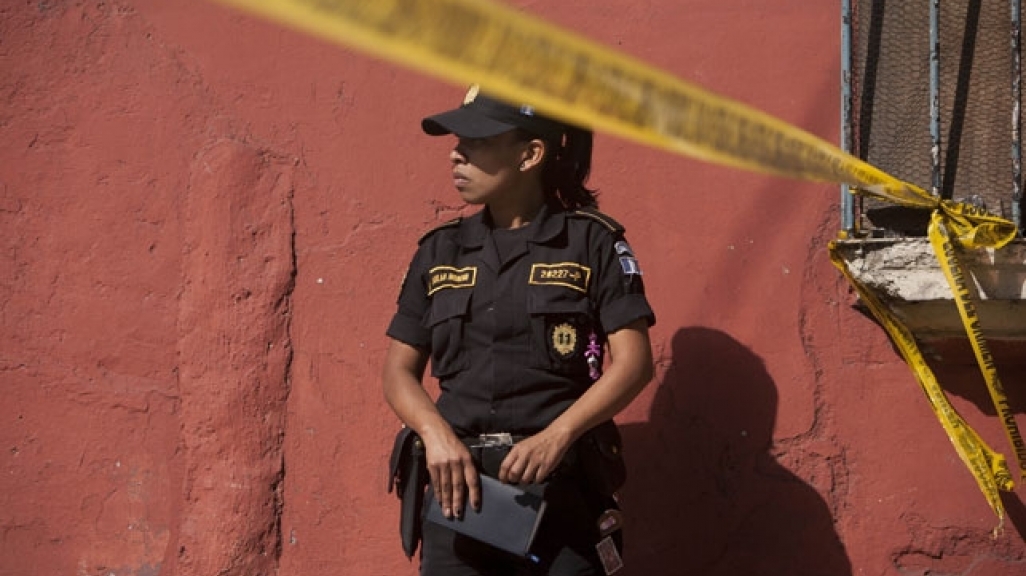Taking a Bite Out of Latin American Crime
Taking a Bite Out of Latin American Crime
Combating crime is a difficult task and requires a multidimensional strategy, write COA’s Eric Farnsworth and Christine Vidmar Gomes for U.S. News & World Report.
In a region that has been known for democracy, bountiful natural resources, cultural diversity and a burgeoning middle class, crime and insecurity threaten to erode progress. A new report by the U.N. Office on Drugs and Crime finds that Latin America is the most dangerous region in the world. Whereas most countries’ violence levels have decreased, the homicide rate in Latin America grew by 11 percent between 2000 and 2010, and more than 1 million people have died as a result of criminal violence. Robberies tripled in the past 25 years, with one in five people affected.
Separately, the International Monetary Fund projects Latin American economic growth to only reach 3 percent in 2014. While much of this pessimism is due to global financial concerns such as a slowing Chinese economy, internal factors like crime and violence are also an inhibitor. A U.N. Development Program report shares the financial costs of violence in select countries, from 2.5 percent loss of gross domestic product in Costa Rica to over 10 percent in Honduras. Many domestic and foreign investors think twice before doing business in dangerous regions and governments understand that unless they can address these problems, economic growth will be negatively impacted.
Naturally, not all Latin American countries are the same when it comes to violence; homicide rates in Honduras and Venezuela outpace the rest of the world. Meanwhile, Chile has a rate of just 3.1 homicides per 100,000 inhabitants. Countries such as Colombia, Guatemala, El Salvador and Costa Rica are seeing downward trends in homicide figures. But, unfortunately, as a region, the overall rate has increased in the past decade, with much of the violence attributed to transnational crime and gangs.
Combating crime is a difficult task and requires a multidimensional strategy, engaging stakeholders at the local, city, state, national and international level. Although one size fits all policies generally fail, two key areas deserve attention and reform: access to weapons and rule of law.
Sixty-six percent of all homicides across the Americas involve the use of firearms, compared to 28 percent in Africa and Asia and 13 percent in Europe. In major Latin American economies — Argentina, Brazil, Chile, Colombia and Mexico — personal firearms are permitted, but obtaining the necessary permits is an arduous ordeal, with restrictions such as passing physical and psychiatric exams, undergoing firearm training and proving no criminal history.
Regional cooperation could be improved. For example, Mexican leaders have long complained about the smuggling of military-style weapons from the United States. Democrats in the U.S. Senate and House have been working to reinstate the assault weapons ban that existed from 1994 to 2004, which may help to reduce the military-style weaponry making it into the hands of criminals in the Americas.
Improved rule of law and the professionalization of police forces must also be at the top of the list across the region. A strong criminal justice system enforces laws and protects its citizens from harm through trained law enforcement, timely prosecution, fair judicial trials, and funded correctional facilities. With the exception of the cases of the Dominican Republic, Nicaragua and Panama, more than half of the citizens in Latin American countries surveyed expressed little or no confidence in their criminal justice systems, the study shows. In turn, such attitudes directly impact the ability of nations to govern democratically.
Only a concerted, sustained focus on these issues will begin to address criminal violence in a significant and effective way. In part, Latin America’s continued march toward economic development and growth depends on their success.
This article was originally published in U.S. News & World Report's online opinion section.









